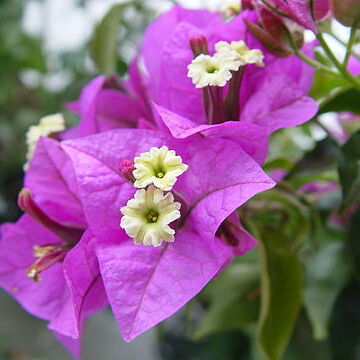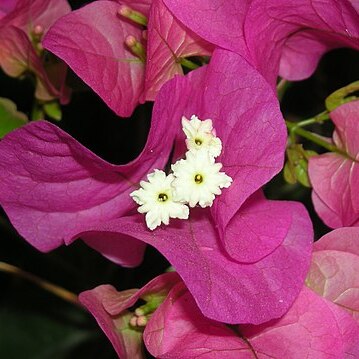Herbs, shrubs, trees, or sometimes spiny vines. Leaves opposite, alternate, or ± whorled; stipules absent; petiole usually present, well defined; leaf blade simple, herbaceous or slightly fleshy, margin entire. Inflorescences mostly terminal, less often axillary, of cymes, umbels, or verticils, sometimes 1-flowered or fasciculate, often grouped into panicles; bracts often inconspicuous, sometimes forming calyxlike involucre, or large and brightly colored. Flowers bisexual, rarely unisexual or polygamous, actinomorphic. Perianth constricted beyond the ovary, base persistent, closely enclosing ovary which appears inferior, limb petaloid beyond constriction, tubular, funnelform, or campanulate, apex 5-10-lobed, lobes plicate or valvate in bud, persistent or caducous. Disk absent. Stamens (1-)3-5(-many), hypogynous, free or connate at base, involute in bud; anthers 2-loculed, dehiscence longitudinal. Ovary superior, 1-loculed; ovule 1. Style 1; stigma globose. Fruit an achenelike anthocarp enclosed by persistent perianth, ribbed or winged, often glandular. Seed 1; endosperm present; embryo straight or curved.
Trees, shrubs, herbs or spiny climbers, glabrous or hairy; hairs simple, sometimes glandular. Leaves alternate, opposite or whorled, simple, exstipulate. Inflorescence basically cymose but variously modified, often umbellate, glomerulose, verticillate or thyrsoid, axillary or terminal, bracteate. Flowers bisexual or unisexual, actinomorphic. Perianth petaloid with 5–10 tepals connate into a tube, the upper part sometimes caducous, lower part persistent. Stamens 1–40, hypogynous, free or basally connate, unequal; anthers 2-locular. Ovary superior, 1-carpellate; style 1; stigma 1. Fruit usually an anthocarp consisting of an achene enclosed in the persistent basal portion of the perianth. Seed 1, with straight or curved embryo, with or without endosperm. See also Du Puy & Telford (1993: 99), Green (1994: 73).
Ovary superior, unilocular, sessile or stipitate; ovule 1, basal, erect; style 1, slender, more or less equal to or longer than stamens; stigma linear, capitate, peltate or penicillate
Fruit indehiscent, usually an anthocarp formed by the persistent accrescent basal part of the perianth enclosing an achene, sometimes winged or variously ribbed, sometimes glandular
Flowers actinomorphic, hermaphrodite or unisexual, usually cymose, sometimes surrounded by brightly coloured bracts, the latter occasionally simulating a calyx
Perianth gamophyllous, lower part persistent, usually green, upper part often petaloid and coloured, sometimes caducous after anthesis
Flowers hermaphrodite or unisexual, actinomorphic, bracteate; bracts free or connate into an involucre, sometimes brightly coloured
Stamens 1-many, hypogynous; filaments free or connate at base, subequal to unequal; anthers dithecous, dehiscing longitudinally
Stamens 1 to many, hypogynous, free or connate at the base, involute in bud; anthers 2-celled, opening lengthwise
Inflorescences axillary or terminal, cymose, umbellate, glomerulate, verticillate or thyrsoid
Leaves opposite, alternate or in fascicles, simple, exstipulate, usually petiolate
Fruit indehiscent, enclosed in the persistent base of the calyx, often glandular
Ovary superior, 1-celled; style slender; ovule solitary, erect and inverted
Seeds with copious or scanty endosperm and straight or curved embryo
Seed 1; endosperm present or absent; embryo straight or curved
Calyx tubular, often petaloid, valvate or folded in the bud
Leaves alternate or opposite, simple; stipules absent
Trees, shrubs, herbs or climbers, sometimes spiny
Herbs, shrubs or trees
Petals absent


